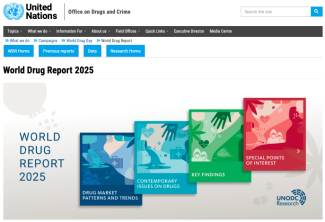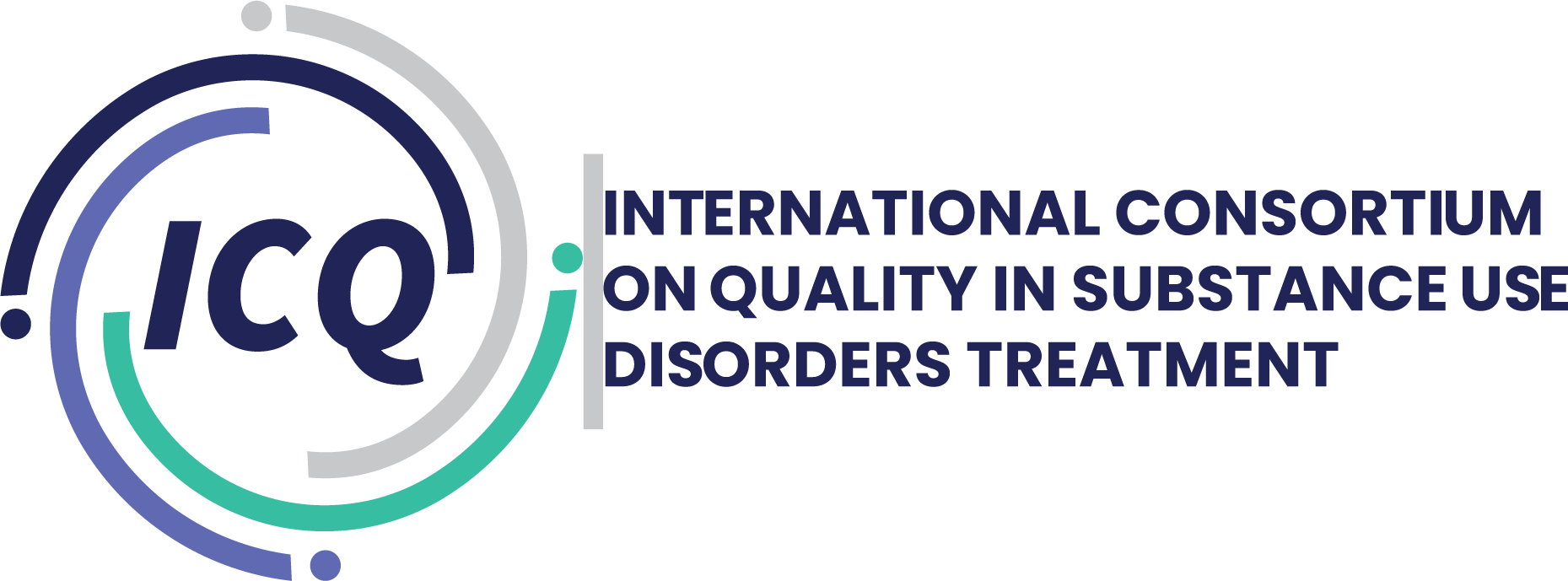World Drug Report 2025

On July 2nd, 2025, ISSUP had the privilege of hosting a webinar outlining highlights from the 2025 edition of the World Drug Report (WDR), presented by Ms. Giovanna Campello, Chief of the Prevention, Treatment and Rehabilitation Section at the United Nations Office on Drugs and Crime (UNODC). This WDR remains the preeminent global resource on drug trends, offering rich data and insightful analysis on drug production, trafficking, and use, and serving as a guide for shaping evidence-based international policy and health responses.
The presentation painted a sobering picture of global drug use, with the number of users reaching 316 million, representing a 28% increase over the past decade, and a corresponding 15% rise in prevalence. Worryingly, the number of people with drug use disorders increased by 13%, while only 8.1% of these individuals accessed treatment in 2023. This highlights the pressing need for broader coverage of evidence-based services and improved access to care.
Cocaine markets have seen significant growth, particularly across Africa and Asia, with related treatment demand rising in tandem. Synthetic drug seizures, especially methamphetamine, continue to dominate global drug enforcement reports, driven in part by shortages in naturally cultivated substances and the adaptability of synthetic production. At the same time, a decline in the detection of new psychoactive substances (NPS) and associated deaths offers some positive news, suggesting regulatory systems are having an impact, though this modest victory is overshadowed by the continued rise in drug-related deaths more broadly.
A particularly complex issue highlighted in the report is the global control of pharmaceuticals. While some regions face rising diversion of medicines into illicit markets, many low- and middle-income countries still lack access to controlled medicines for legitimate medical use, such as pain relief and palliative care. This inequity not only exacerbates suffering but also fuels illegal trade in these substances. Drug trafficking continues to serve as a major income stream for organised crime, making it challenging to counter with health-based approaches when the illicit industry profits from established patterns of use.
The report also underscores critical concerns regarding the criminal justice response. Globally, the majority of drug-related arrests are for personal use or possession, not trafficking. Legal responses to personal drug use vary dramatically between countries, particularly in areas of cultivation, possession, and purchase, illustrating the need for greater international consistency and reform.
The discussion segment of the webinar touched on a range of issues. A recurring theme was the growing concern around synthetic drugs and new psychoactive substances (NPS), particularly their rising prevalence relative to conventional drugs. Attendees from sub-Saharan Africa highlighted the emergence of locally produced, non-conventional substances in rural communities, urging UNODC to recognize and respond to these novel patterns of dependence. Several participants expressed frustration over data gaps, especially in Southern Africa, and called for more robust regional surveillance and research. Others, like researchers from Burkina Faso, shared new national survey initiatives and requested support and collaboration to contextualise findings within broader West African trends.
Attendees noted the fragility of health systems and the dependence on NGO-led efforts, which remain under-supported by many governments. The need for services and policy to be geared towards specific target populations was also emphasised, with repeated calls for targeted prevention and treatment for women, and for improved inclusion of gender-disaggregated data. The role of community and faith-based organisations in prevention and reintegration was also highlighted as a vital yet often underutilised resource.
Stigma and reintegration challenges were raised frequently, with attendees asking for tools to follow up on individuals post-rehabilitation and strategies to facilitate social inclusion. Participants expressed interest in the role of technology in both drug procurement and prevention, the use of early warning systems for NPS in countries like China, India, and Afghanistan, and how conflict-affected regions, particularly in West Africa, are accounted for in exposure risk assessments.
Finally, there was strong interest in identifying “champion countries” where drug use prevalence is declining, and suggestions to formalise a group to study and share best practices. These rich and diverse questions reflect the complexity of the global drug landscape and reaffirm the importance of regional and national tailoring, community-focussed evidence-informed approaches to prevention, treatment, and policy development.
As we navigate the evolving landscape of global drug challenges, the 2025 World Drug Report is a clarion call for integrated, approaches that that bring together evidence-informed treatment and regulatory frameworks. The harms associated with drug use remain significant, and our responses must reflect both scientific evidence and human rights imperatives. ISSUP remains committed to supporting capacity building and the application of best evidence to policymaking to advance effective, appropriate, and sustainable solutions to address drug use disorders.
